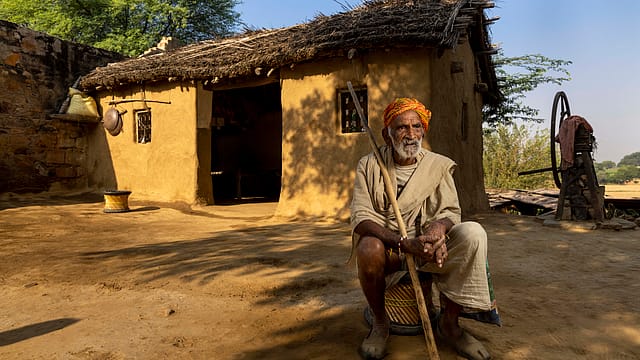24.8 cr Indians escaped poverty in last 9 years: NITI Aayog
ADVERTISEMENT

About 24.82 crore people escaped multidimensional poverty in the last nine years between 2013-14 and 2022-23, according to a discussion paper released by government's think tank NITI Aayog.
India has registered a significant decline in multidimensional poverty from 29.17% in 2013-14 to 11.28% in 2022-23 — a reduction of 17.89 percentage points, shows the discussion paper.
Poorer states record a faster decline in poverty, indicating a reduction in disparities. Uttar Pradesh registered the largest decline in the number of poor with 5.94 crore people escaping multidimensional poverty during the last nine years followed by Bihar at 3.77 crore, Madhya Pradesh at 2.30 crore and Rajasthan at 1.87 crore.
The paper also shows that the pace of decline in poverty headcount ratio using the exponential method was much faster between 2015-16 to 2019-21 (10.66% annual rate of decline) compared to the period 2005-06 to 2015-16 (7.69% annual rate of decline).
While the performance of states varies, some states which were traditionally having high poverty have made remarkable progress in helping people escape poverty, thus reducing inter-state disparities in multidimensional poverty, as per NITI Aayog.
January 2026
Netflix, which has been in India for a decade, has successfully struck a balance between high-class premium content and pricing that attracts a range of customers. Find out how the U.S. streaming giant evolved in India, plus an exclusive interview with CEO Ted Sarandos. Also read about the Best Investments for 2026, and how rising growth and easing inflation will come in handy for finance minister Nirmala Sitharaman as she prepares Budget 2026.
All 12 indicators of the Multidimensional Poverty Index (MPI) have recorded significant improvement during the entire study period. To assess the poverty levels in the year 2013-14 against the current scenario (i.e. for the year 2022-23), projected estimates have been used due to data limitations for these specific periods, says NITI Aayog.
The Multidimensional Poverty Index (MPI) is a globally recognised comprehensive measure that captures poverty in multiple dimensions beyond monetary aspects.
Significant initiatives covering all dimensions of poverty have led to 24.82 crore individuals escaping multidimensional poverty in the last nine years, according to NITI Aayog. As a result, India is likely to achieve its SDG (Sustainable Development Goals) target of halving multidimensional poverty well before 2030.
"The Government's persistent dedication and resolute commitment to enhancing the lives of the most vulnerable and deprived have been instrumental in this accomplishment," says the Centre's think tank.
"The Government of India has made remarkable progress in improving the lives of people, aiming to reduce poverty in all dimensions. Noteworthy initiatives like Poshan Abhiyan and Anemia Mukt Bharat have significantly enhanced access to healthcare facilities, leading to a substantial decrease in deprivation. Operating one of the world's largest food security programmes, the Targeted Public Distribution System under the National Food Security Act covers 81.35 crore beneficiaries, providing food grains to rural and urban populations," NITI Aayog says.
"Recent decisions, such as extending free food grain distribution under Pradhan Mantri Garib Kalyan Anna Yojana for another five years, exemplify Government's commitment. Various programmes addressing maternal health, clean cooking fuel distribution through Ujjwala Yojana, improved electricity coverage via Saubhagya, and transformative campaigns like Swachh Bharat Mission and Jal Jeevan Mission have collectively elevated living conditions and overall well-being of people," it adds.
Flagship programmes like Pradhan Mantri Jan Dhan Yojana and PM Awas Yojana have played pivotal roles in financial inclusion and providing safe housing for the underprivileged, it says.
